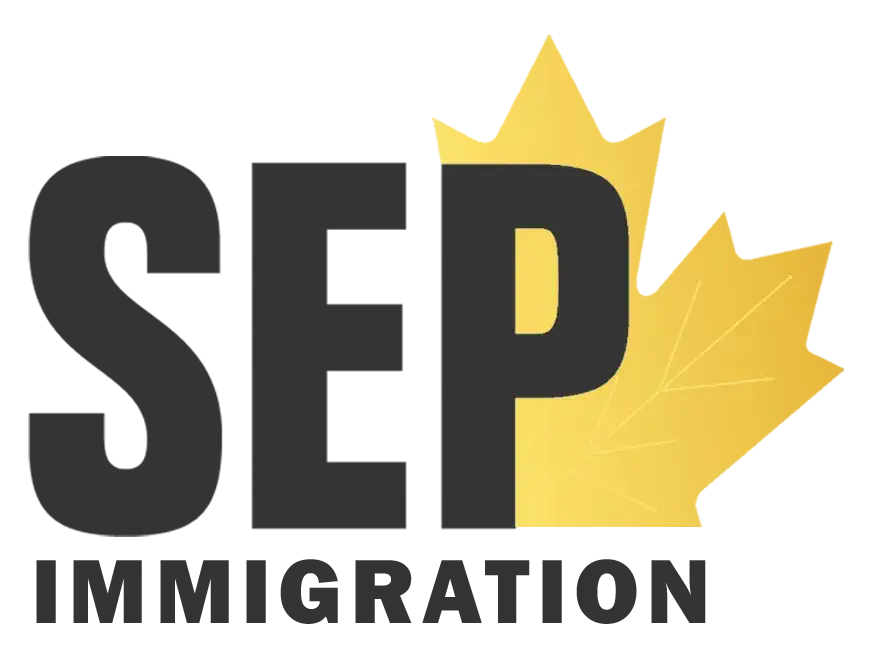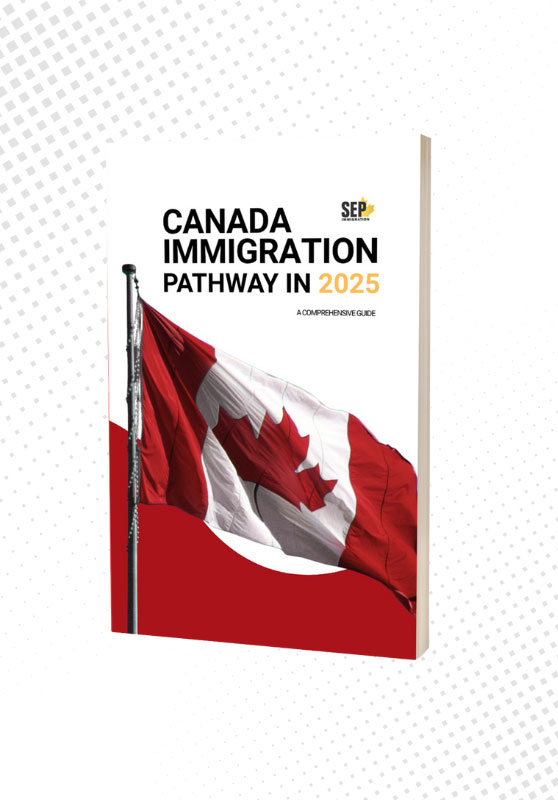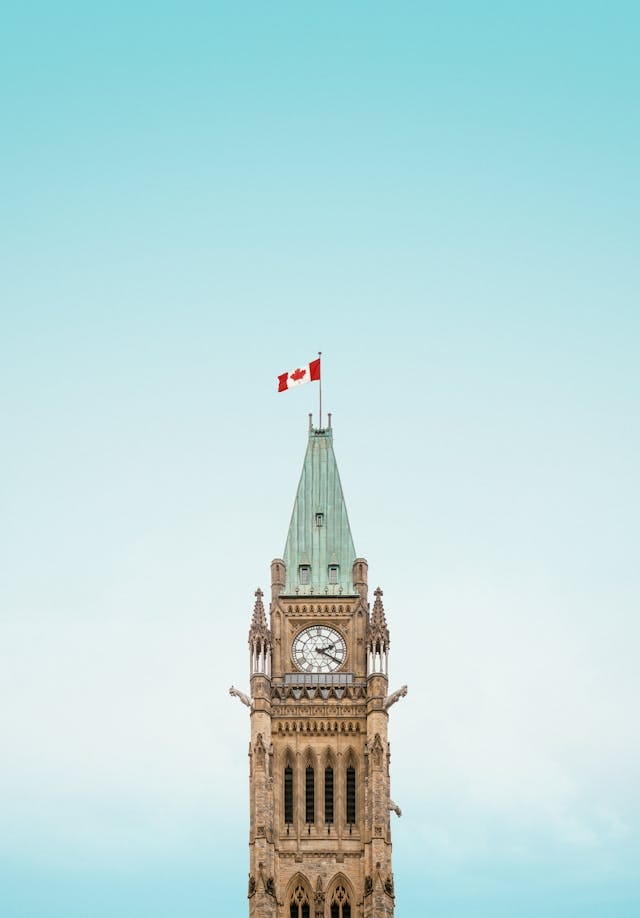
The deadline of the program created this year which gives temporary foreign workers an opportunity to become permanent residents and is due on November 05, 2021, may be extended. The program may also apply to refugee claimants thereafter.
- The deadline of the program created this year which gives temporary foreign workers an opportunity to become permanent residents and is due on November 05, 2021, may be extended.
- The program may also apply to refugee claimants thereafter.
- The Healthcare stream still has around 14000 available spots to apply for.
- During the first 8 months of 2021, only 222,275 people became permanent residents and Canada is still trying to reach the number of 401,000 new permanent residents this year.
- The open work permits issued under this program are valid until the end of 2022
The Healthcare stream still has around 14000 available spots to apply for.
During the first 8 months of 2021, only 222,275 people became permanent residents and Canada is still trying to reach the number of 401,000 new permanent residents this year.
The open work permits issued under this program are valid until the end of 2022.
Looking ahead to future TR to PR pathways
The 2021 TR to PR public policies showed how quickly an immigration program can reach its intake cap. Some streams filled on the first day, and many temporary residents missed their chance because key documents, such as language test results or police certificates, were not ready in time.
Canada has signalled that it plans to create new opportunities for temporary residents to move to permanent residence in the coming years, including a one time measure that is expected to benefit tens of thousands of workers and graduates around 2026 and 2027. Full program details are not public yet, but it is already clear that preparation will matter again.
This page explains how the earlier TR to PR pathway worked and, more importantly, helps you get your documents in order in advance so you can react quickly when a new TR to PR pathway opens.
Table of Contents
ToggleAbout TR to PR Program
The temporary resident to permanent resident pathway is a limited-time pathway to permanent residence. You may be eligible for permanent residence if
- you have work experience in Canada in an essential occupation or the health or health services field or
- you recently graduated from a Canadian post-secondary institution
There are 6 streams in this pathway:
- 3 accept both English- and French-speaking applicants
- 3 are specifically for French speakers
- Workers in Canada: health care
- Workers in Canada: essential, non-healthcare: the maximum number of applications for this stream has been reached.
- Recent international graduates from a Canadian institution: the maximum number of applications for this stream has been reached.
- French-speaking workers in Canada: health care
- French-speaking workers in Canada: essential, non-healthcare
- French-speaking recent international graduates from a Canadian institution

What Are the Available Pathways for Permanent Residency Under the TR to PR Immigration Programs?
The TR to PR immigration programs offer several pathways for temporary residents to transition to permanent residency. These include streams for essential workers in both healthcare and non-healthcare fields, as well as international graduates. Additionally, there are specific streams for French-speaking candidates, with no caps on the number of applications.
Each pathway targets specific labor market needs, offering a streamlined process for temporary workers and graduates to secure permanent residency.
Who Qualifies Under the TR to PR Immigration Program Targeting International Students?
International students are eligible under the TR to PR pathway if they have recently completed a post-secondary program at a designated learning institution in Canada. Applicants must have finished their studies no earlier than January 2017 and be living in Canada with valid temporary resident status. Meeting language proficiency requirements and not residing in Quebec are also mandatory for eligibility.
Who Qualifies Under the TR to PR Immigration Program Targeting Essential Occupations?
To qualify under the essential occupations stream, applicants must have at least one year of full-time work experience in Canada in an eligible essential occupation. This includes jobs in sectors like agriculture, manufacturing, and construction. Workers must also hold valid temporary resident status, be currently employed in Canada (in any occupation), and meet language requirements.
What Occupations in the TR to PR Immigration Program Qualify as an Essential Worker?
The TR to PR essential worker stream covers over 95 occupations. These range from industrial and construction trades to customer service roles like cashiers and shelf stockers. Jobs in food production, transportation, and various trades are included. Applicants need at least one year of recent work experience in one or more of these occupations to qualify.
What Occupations in the TR to PR Immigration Program Qualify as a Health-Care Worker?
The healthcare stream in the TR to PR pathway covers a wide range of occupations. Eligible roles include registered nurses, physicians, pharmacists, and social workers. Applicants must have at least one year of full-time work experience in one of these positions within the last three years.
How Do I Apply to One of the TR to PR Immigration Programs?
To apply, you need to create an online account through the IRCC portal. Ensure all required documents are ready, such as proof of employment and language test results. The application must be submitted before the intake cap is reached, so early submission is advised.
What Documents Do I Need to Apply for the New Permanent Resident Immigration Programs?
When you apply under a TR to PR pathway or a similar economic immigration program, you need more than a short list of forms. Typical applications include proof of your current work in Canada, proof of your past work experience, valid language test results, education records, police certificates, identity documents, and proof that you hold legal status in Canada if you apply from inside the country. It is wise to start collecting and organizing these items well before the next program opens, because some of them can take months to obtain.
TR to PR preparation document checklist
The next TR to PR pathway will likely ask for many of the same documents that IRCC uses in other economic permanent residence programs. The checklist below groups the main document types, gives clear examples, and shows who usually needs each item.
Document type | Examples of documents | Who needs this |
Proof of language ability | Results from an IRCC approved language test such as CELPIP General, IELTS General Training, PTE Core, TEF Canada, or TCF Canada, valid on the day you submit your PR application | Principal applicant |
Criminal background checks | Police certificates for each country where you have lived at least six months in a row in the last ten years | Principal applicant and family members aged 18 or more |
Education | Educational Credential Assessments (ECAs) for foreign degrees, final transcripts and proof of graduation for Canadian programs | Principal applicant |
Travel history | A travel log that covers the past ten years or since age 18, airline booking confirmations, and copies of passports with entry and exit stamps | Principal applicant and family members if requested |
Work experience in Canada and abroad | Complete employment history, employer reference letters with duties and hours, T4 slips or Notices of Assessment for work in Canada, and copies of work contracts | Principal applicant |
Current employment in Canada | Valid work permit, employer letter confirming your current role, work location, salary, and hours per week, plus recent pay stubs and your employment contract | Principal applicant who is working in Canada at the time of application |
Status in Canada | Current work permit, study permit, or visitor record, plus entry stamp or electronic travel record | Applicants applying from inside Canada |
Maintained status | Copy of your previous permit, copy of the extension application submitted before expiry, and the confirmation or fee receipt that shows IRCC received it | Applicants whose permit expired while an extension application was in process |
Organizational memberships and activities | A list of political, social, professional, or student organizations you have belonged to, donated to, or volunteered with, plus any reference letters or donation receipts | Principal applicant (used for background and Schedule A forms) |
Identity and civil status | Passport, birth certificate, marriage certificate, divorce documents where relevant, and adoption papers | Principal applicant |
Identity and civil status for family members | Copies of all passport pages, birth certificates, marriage documents, adoption papers and any other civil status records | Spouse or common law partner and dependent children |
Translations | Certified translations or translations with a sworn translator affidavit for documents that are not in English or French, plus scans of the original documents or certified copies | Anyone whose documents are in another language |
Travel history for family members | Travel logs and passports for your spouse or partner and for dependent children aged 18 or more, with enough detail to complete form IMM 5562 if required | Spouse or common law partner and dependent children aged 18 or more |
Criminal checks for family members | Police certificates for each family member aged 18 or more for every country where they have lived at least six months in a row since turning 18 | Spouse or common law partner and dependent children aged 18 or more |
Letter of explanation | A short letter that clarifies gaps in your address or employment history, differences in spelling or dates, or reasons why a required document is missing, with proof of your attempts to get it | Principal applicant, and sometimes family members |
Proof of common law relationship | IMM 5409 and proof of at least twelve months of continuous cohabitation such as joint leases, utility bills, bank statements and credit card statements | Applicants with a common law partner included in the application |
Key details about language tests, police certificates, education and travel history
Language tests
IRCC uses language test results to measure your English or French level in an objective way. Your results must come from an approved testing organization, and they must still be valid on the day you submit your permanent residence application. For many economic programs, accepted tests include CELPIP General, IELTS General Training, PTE Core, TEF Canada and TCF Canada. Test results are normally valid for two years. If your results expire before you apply, you will need to sit a new test.
Police certificates
Police certificates are used to check if an applicant is criminally inadmissible. In most cases, you need a certificate for yourself and for each family member aged 18 or more from every country where each person has lived at least six months in a row during the last ten years. You usually do not need a certificate for time spent in Canada or for periods before age 18. For your current country of residence, the certificate should be recent, often issued within six months before you apply. For countries where you no longer live, the certificate must have been issued after your last stay of six months or more. The name of this document and the way to get it can differ from one country to another.
Education
If you claim foreign education, IRCC generally asks for an Educational Credential Assessment for each completed degree. An ECA states how your education compares to Canadian standards and is usually accepted for five years from the date of issue. For Canadian education, an ECA is not required. Final transcripts and proof of graduation are normally enough to show that you meet the educational requirement of a program.
Travel history
Most permanent residence applications ask you to list all trips outside your country of origin or residence for the past ten years, or since you turned 18, often on form IMM 5562. Officers compare this travel history with your police certificates and with the personal and work histories that you declare in other forms. If you have moved or travelled a lot, keeping a personal travel log now makes it easier to fill out the forms accurately later.
Do I Have to Demonstrate Settlement Funds When I Apply Under One of the TR to PR Immigration Programs?
No, demonstrating settlement funds is not a requirement for the TR to PR pathway. This differs from other immigration streams like Express Entry, where proof of financial means is mandatory.
What Occupations in the TR to PR Immigration Program Qualify as a Health-Care Worker?
Eligible healthcare occupations under the TR to PR program include registered nurses, physicians, medical laboratory technologists, and other healthcare practitioners. These workers must have at least one year of full-time, or equivalent part-time, experience in Canada. Positions such as pharmacists, social workers, and psychologists are also part of this stream. The focus is on roles that provide critical healthcare services, ensuring applicants meet the program’s criteria.
How Do I Apply to One of the TR to PR Immigration Programs?
To apply for the TR to PR program, you need to access the IRCC portal, where you’ll submit your application online. Make sure all required documents are prepared before you start, such as proof of employment and language test results. Once submitted, your application will be reviewed, and if accepted, you’ll proceed through the immigration process. It’s important to apply early as some streams fill up quickly, and once the cap is reached, applications close.
What Documents Do I Need to Apply for the New Permanent Resident Immigration Programs?
Key documents required include proof of your current employment, valid temporary resident status, and evidence of meeting the language requirements. For international graduates, your post-secondary credentials will also be needed. Police clearance certificates and medical exams might be required in certain cases. Ensure all documents are accurate and up to date to avoid delays in processing your application.
Do I Have to Demonstrate Settlement Funds When I Apply Under One of the TR to PR Immigration Programs?
No, applicants under the TR to PR program do not need to demonstrate settlement funds. This is a significant difference from other Canadian immigration programs like Express Entry, which require proof of financial resources. The focus for TR to PR is on your employment and work experience, making it easier for temporary residents already living and working in Canada to apply without this financial barrier.
How Much Does the TR to PR Immigration Program Cost?
The costs associated with the TR to PR program are relatively straightforward. Applicants must pay the processing fee, which is around $825 for the principal applicant. Additionally, the Right of Permanent Residence Fee (RPRF) is approximately $500. These fees must be paid upfront, and there may be additional costs for medical exams, police certificates, and biometrics, depending on your specific situation.
Is a Job Offer Required to Apply for the TR to PR Immigration Programs?
A job offer is not required to apply for the TR to PR programs. However, you must be currently employed in Canada when you submit your application. While your current job doesn’t have to be in the same field as your qualifying work experience, it’s important to meet the one-year work requirement in one of the eligible occupations listed under the program.
How Long Will It Take to Process Applications Made Under the TR to PR Immigration Programs?
Processing times for TR to PR applications vary but typically range from six months to one year. The timeline depends on the volume of applications received and whether you submit all the required documents correctly. Incomplete applications or issues such as needing additional verification may cause delays, so it’s essential to ensure everything is in order when applying.
Can Applicants’ Spouses and Dependent Children Also Be Included in an Application for Permanent Residence Under the TR to PR Immigration Programs?
Yes, applicants can include their spouses and dependent children in their TR to PR application. All family members must meet the health and security requirements to be granted permanent residence. Including your family in the application allows them to obtain permanent resident status alongside you, facilitating a smoother transition for the entire household.

Is There a Limit to How Many Applications Will Be Processed Under the TR to PR Immigration Programs?
There is a cap on most streams under the TR to PR program. For instance, streams targeting essential non-healthcare workers and international graduates have specific limits on the number of applications accepted. However, the streams for French-speaking candidates do not have application limits, allowing them to apply without concerns about reaching capacity.
Once the Intake Cap Is Reached on the TR to PR Immigration Programs, Will They Re-open?
Once the intake cap for a specific stream is reached, it will not re-open for new applications. The TR to PR programs were designed as temporary measures, and once their quotas are filled, no further applications will be accepted under that stream. It’s crucial to apply early to avoid missing out, especially for the more popular streams.
If an Applicant Currently Lives and Works in Quebec, Can They Apply to One of the TR to PR Immigration Programs if Eligible?
Applicants living in Quebec are not eligible to apply for the TR to PR immigration programs. The TR to PR pathways are federally managed and specifically exclude those intending to reside in Quebec. Quebec has its own separate immigration programs, so individuals residing in that province must apply through Quebec’s immigration system.
Once Permanent Residence Status Is Granted Under One of the TR to PR Immigration Programs, Can the Applicant Live Anywhere in Canada?
Yes, once permanent residence is granted, applicants are free to live anywhere in Canada, except Quebec if they applied under the federal TR to PR programs. Permanent residents can move freely within Canada and settle in any province or territory they choose, including those outside the one where they may have initially worked or studied.
If I Have Applied Under a TR to PR Immigration Program, Can I Apply for an Open Work Permit?
Yes, applicants under the TR to PR program can apply for an open work permit if their current permit is expiring soon. This open work permit allows individuals to continue working while their permanent residence application is processed. The work permit helps applicants maintain their employment status during the waiting period.
How Long Will the TR to PR Immigration Programs Be Available?
The TR to PR programs are temporary and were introduced as a response to the COVID-19 pandemic. While they were initially set to close after reaching their intake caps, the exact end date of these programs may depend on policy decisions. Some streams might remain open longer, especially those targeting French-speaking applicants or specific essential workers.
Tips to prepare your TR to PR documents in advance
Preparing your documents early can make a big difference once a new TR to PR pathway opens and application caps start to fill. A bit of work now can save a lot of stress later.
Scan and organize your documents
Create clear, readable scans of each document. Store them in well named folders, and use a simple naming pattern such as “DocumentType_LastName_FirstName_YYYY-MM-DD.pdf”. For example: “PoliceCertificate_Doe_Jane_2025-06-01.pdf”. This makes it much easier to upload the right files quickly.
Watch validity periods
Some items expire. Language test results are normally valid for two years. ECAs used for immigration stay valid for several years, often five. Police certificates usually have a short validity window for your current country of residence, and your passport needs to remain valid while your application is processed and while you complete your landing. If something is close to its expiry date, plan ahead.
Request strong employer letters
Employer reference letters play a key role in showing that you meet work experience requirements. Good letters usually include the employer’s full contact details, your job title, start and end dates, work location, hours per week, salary and benefits, and a clear list of your main duties. The duties should describe what you actually do in your role, not just copied text from a NOC description. Supporting items such as pay stubs, T4 slips, Notices of Assessment and signed contracts help to confirm the information.
Follow IRCC rules for translations
If any document is not in English or French, you will need a translation that meets IRCC rules. This normally means a certified translation, or a translation with a sworn affidavit from the translator, plus a scan of the original document or a certified copy. Family members are usually not allowed to act as translators. If you expect to submit many documents in another language, it is better to plan the translation work early.
Use a letter of explanation when needed
Sometimes a required document cannot be obtained, or there are gaps or irregularities in your history. In such cases, a short letter of explanation can help. In this letter you can describe what happened, what you did to try to solve the issue, and attach any proof of your efforts, such as emails, receipts or official replies.
Review everything before you submit
Just before you send your permanent residence application, take the time to review your full package. Check that all required documents are included, nothing has expired, scans are clear, and passport copies include all pages that show stamps or visas. A careful final check reduces the risk of delays and extra document requests later.
Check if you can apply
Each stream has different eligibility requirements. To find out if you are eligible for one or more of the streams, contact us today.
Why choose us?
We have been helping many applicants to become permanent residents for years and we have a high success rate. Our clients from almost 20 different countries have experienced this with us and you can be the next successful one. We know how to prepare documents and how to make your immigration process smooth and easy for you. Contact us HERE to start the process today!
If you are not a Canadian Permanent Resident yet and you are not sure what the best way for you to immigrate to Canada is, please fill out our assessment form HERE and we will get back to you with your possible options.






